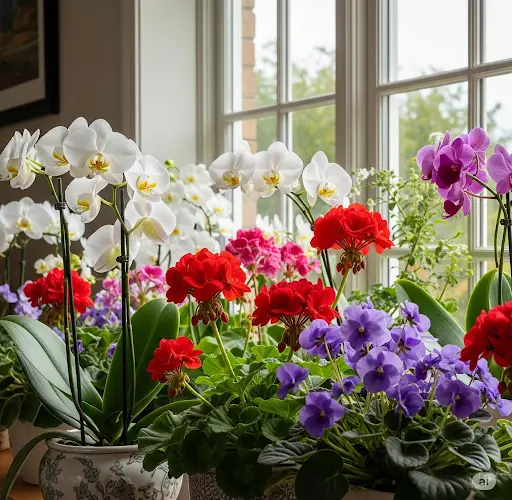If you’re a flower lover, there’s nothing more disheartening than watching your favorite plant wither, pale, or stop blooming. Whether it’s a potted flower on your balcony or a bed of perennials in your garden, plants often suffer from lack of nutrients, improper care, or poor soil conditions. But there’s good news: you don’t need expensive store-bought fertilizers to restore your plants.
This simple, homemade feeding formula is a natural powerhouse. When applied under any flower—whether it’s drooping, yellowing, or stunted—it helps rejuvenate growth, restore vibrant green leaves, and encourage healthy flowering. Even weak or neglected plants show noticeable improvement within days.
What Causes Flowers to Decline?
Plants weaken for many reasons, including:
-
Poor soil quality or lack of nutrients
-
Overwatering or underwatering
-
Pest damage
-
Insufficient light
-
Stress from repotting or extreme temperatures
When a plant lacks essential nutrients, it begins to show symptoms like:
-
Yellowing or curling leaves
-
Drooping stems
-
Fewer or no blooms
-
Slow growth
-
General lack of vitality
This is where a nutrient-rich, balanced fertilizer makes a difference—especially one that feeds both the plant and the soil.
The Super Feed That Transforms Weak Plants
This natural fertilizer is based on three simple ingredients, each chosen for its beneficial impact on plant health:
Ingredients:
-
1 liter of room-temperature water
-
1 teaspoon of dry yeast
-
1 tablespoon of sugar
-
1 tablespoon of wood ash (optional for outdoor plants)
Why these ingredients work:
-
Yeast is rich in B vitamins and beneficial enzymes. It promotes root development, boosts cell activity, and stimulates overall plant growth.
-
Sugar feeds soil microbes, creating a healthier root zone where nutrients are more easily absorbed.
-
Wood ash provides potassium and calcium, supporting flowering and strong stem growth (especially useful for garden soil).
How to Prepare the Mixture
-
Pour the water into a container or watering can.
-
Stir in the sugar until fully dissolved.
-
Add the yeast and let the mixture rest for about 2–3 hours at room temperature. This allows the yeast to activate.
-
(Optional) For garden use, add wood ash just before application. Skip this step for houseplants or acid-loving plants like azaleas.
How to Use This Natural Fertilizer
-
For potted flowers indoors: Pour 100–150 ml of the solution at the base of each plant once every two weeks.
-
For garden flowers and shrubs: Use up to 250 ml per plant, depending on size. Apply every 10–14 days during the active growing season.
Best time to apply: Early morning or late afternoon when the soil is cool and moist. Avoid applying during midday heat or to very dry soil—water the plant first if needed.
What to Expect After Application
With regular use, the results are impressive—even on plants that appear nearly dead:
-
Leaves turn greener and more vibrant
-
Stems become stronger and more upright
-
Flowering resumes or intensifies
-
New growth appears at the base and tips
-
The plant becomes more resistant to stress and disease
Many gardeners report visible improvements within just 5–7 days, especially when used in spring and early summer when plant activity is highest.
Works on a Wide Range of Plants
This DIY flower feed is incredibly versatile and safe for use on:
-
Geraniums
-
Petunias
-
Marigolds
-
Roses
-
Pansies
-
Orchids
-
Peace lilies
-
Hydrangeas
-
Indoor foliage plants
Avoid applying to succulents or cacti, as they prefer leaner soil conditions with less moisture.
Tips for Even Better Results
-
Pair with regular pruning to remove dead or diseased leaves and encourage fresh growth.
-
Use mulch around garden plants to help retain moisture and suppress weeds.
-
Rotate flower containers to ensure even light exposure.
-
Don’t overfeed: More isn’t always better—stick to the recommended schedule to avoid nutrient buildup or fungal issues.
A Budget-Friendly Way to Breathe Life Back Into Your Plants
One of the best parts about this feeding solution is its low cost and accessibility. With just a few kitchen ingredients, you can create a powerful tonic that brings plants back from the brink and helps healthy ones reach their full potential.
This natural fertilizer doesn’t just feed the plant—it nourishes the entire growing environment, promoting stronger root systems and healthier soil. Whether you’re caring for a drooping houseplant or reviving a neglected garden bed, this method gives your flowers the support they need to thrive.
Final Thoughts
Every flower deserves a second chance, and this simple homemade formula can make that happen. With regular use, even the weakest flower will start to green up, grow stronger, and bloom beautifully. Say goodbye to lifeless plants and hello to vibrant, lush greenery with this effective and natural plant boost.
Try it once, and you may never go back to commercial fertilizers again.



